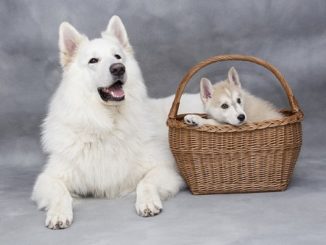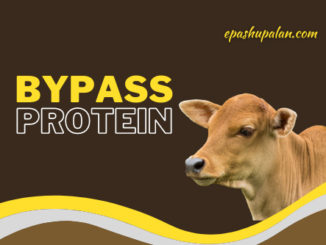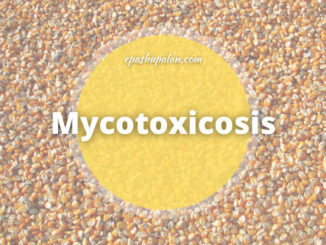|
Condition |
Diet |
| Gastro- intestinal disease (vomiting, diarrhea) | Food may need to be withheld, bland food may need to be used, low fibre diet |
| Cardiac disease | Reduced sodium in the food, small regular meals. Milk cream, butter, nuts and fish and eggs should be avoided. |
| Kidney disease | Adjusted protein intake, unlimited water supply. |
| Diabetes mellitus | Standardised energy intake Good quality food, less starchy food. |
| Obesity | Reduced energy, Exercise. |
| Liver diseases | Easily metabolizable feeds like dextrose rice and maize starch and protein of high BV should be given Fish, fish meal and glands should be avoided. |
| Hypoglycemia | Glucose or sucrose should be fed. Maize starch, rice at meal, egg yolk, meat meal, mineral and vitamin supplement should be given. |
| Urolithiasis | Low protein, low mineral containing high % of common salt should be fed to increase water intake and urine volume. |
| Exposure /stress | In extreme cold or heat stress the dogs are given high energy diets. Glucose solution should be given. And in the absence of it table sugar solution should be given. In case of sunstroke the parenteral fluid therapy is essential. |
|
Pyrexia/fever |
Cream, egg, maize oil in the diet should be included. In case of anorexia fluid should be administered with the help of stomach tube. |
| Pica/depraved appetite | The diet should be supplemented with minerals and fresh long bone of healthy carcass should be offered. A hard rubber ball may be left during the treatment for chewing but habit formation should be avoided. |
| Ascites | Restriction of sodium intake. White eggs, solid high protein and fibre diet should be given. Liquid diet should be reduced. |
Precautions in the feeding of dogs
- Liquid to semisolid diet should be
- Cooked food should be fed because raw meat, bone, fish and chicken may transmit the infection.
- Raw eggs contain anti-vitamin enzyme avidin; hence they should fed after proper cooking except for
- Clean drinking water should be available at all
- Pets should be fed at a particular place in a clean It is prefer to use separate bowls for feeding and watering,
- A definite feeding schedule should be followed and it should be divided in light break-fast, lunch and
- Frequent change in the diet should be
- Diet should be prepared from different types of feed
- The transit dogs should be fed restricted amount of low fibre diet to avoid frequent defecation in the journey.
- Dogs should be allowed 15-20 minutes time for eating, and any left over should be removed and
- Dogs should not be allowed to develop a liking for some particular Such habits may often be inconvenient and in the long run may cause malnutrition leading to either obesity or leanness.
- Long fresh bones with open extremities should be offered from healthy carcass to chew for half to one hour. It keeps teeth and jaw muscles
- Small bones and splinters in meat and fish pieces should be avoided in the dog
- Damage grains or fungus infected grain can cause toxicosis and it can be a potential source of
- Meat obtained from hormone implanted animals and birds should not be used for feeding of dogs particularly in the diet of breeding and growing animals.
Adaptation of dogs to a number of different feeding regimes
- Portion controlled feeding
- Time controlled feeding
- Free choice feeding
- In portion controlled feeding- feed is provided to the dog which can fulfils its energy and protein requirement. In this kind of feeding system owner have maximum control over the dog’s feed and conditions like overweight, obesity and underweight or malnutrition can be prevented in
- In time controlled feeding- surplus feed is supplied but dog is allowed to feed only for a certain period of time like for 15- 20 minutes.
- In free choice feeding- surplus feed is available at all times, initially dogs consume more than they required but later on they adjust their feed intake according to their requirements.
The feeding method of choice in most instances in portion controlled feeding which allows the owner the greatest amount of control over the pet’s diet.
Dry diets are preferred to canned and semi moist foods for companion animals at maintenance. In general, canned and semi moist foods have higher energy densities than dry foods expressed on a dry matter basis. Consuming a low energy diet will result in lower food intake by the animal because of physical limitations of the gastrointestinal tract.
To prevent food overconsumption and weight gain, it is recommended that dogs be fed premeasured meals at regular times as opposed to ad libitum feeding.
Small Dogs and cats reach their mature body size at 8-12 months of age Medium in 12-18 and large breeds in 18-24 months of age. Irrespective of the category they all increase their body weight by about 50 times.
Small Dogs and cats reach their mature body size at 8-12 months of age Medium in 12-18 and large breeds in 18-24 months of age. Irrespective of the category they all increase their body weight by about 50 times.
| The content of the articles are accurate and true to the best of the author’s knowledge. It is not meant to substitute for diagnosis, prognosis, treatment, prescription, or formal and individualized advice from a veterinary medical professional. Animals exhibiting signs and symptoms of distress should be seen by a veterinarian immediately. |






Be the first to comment